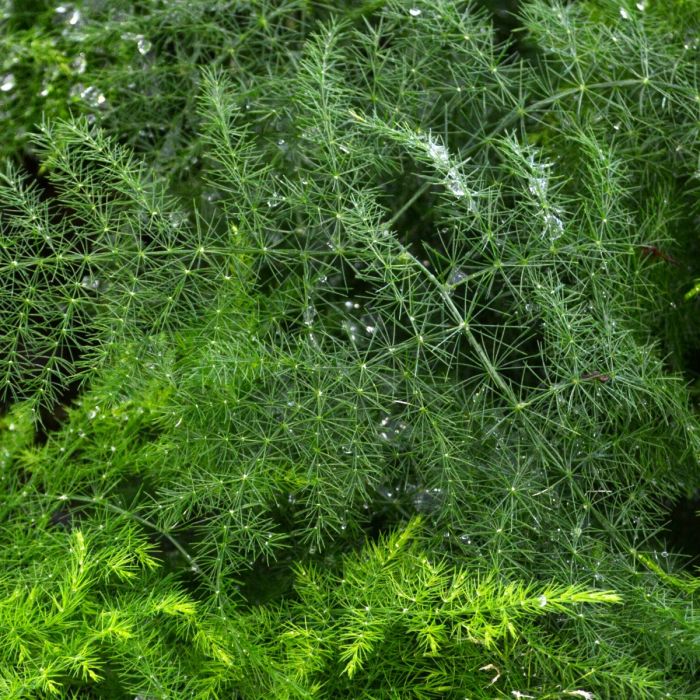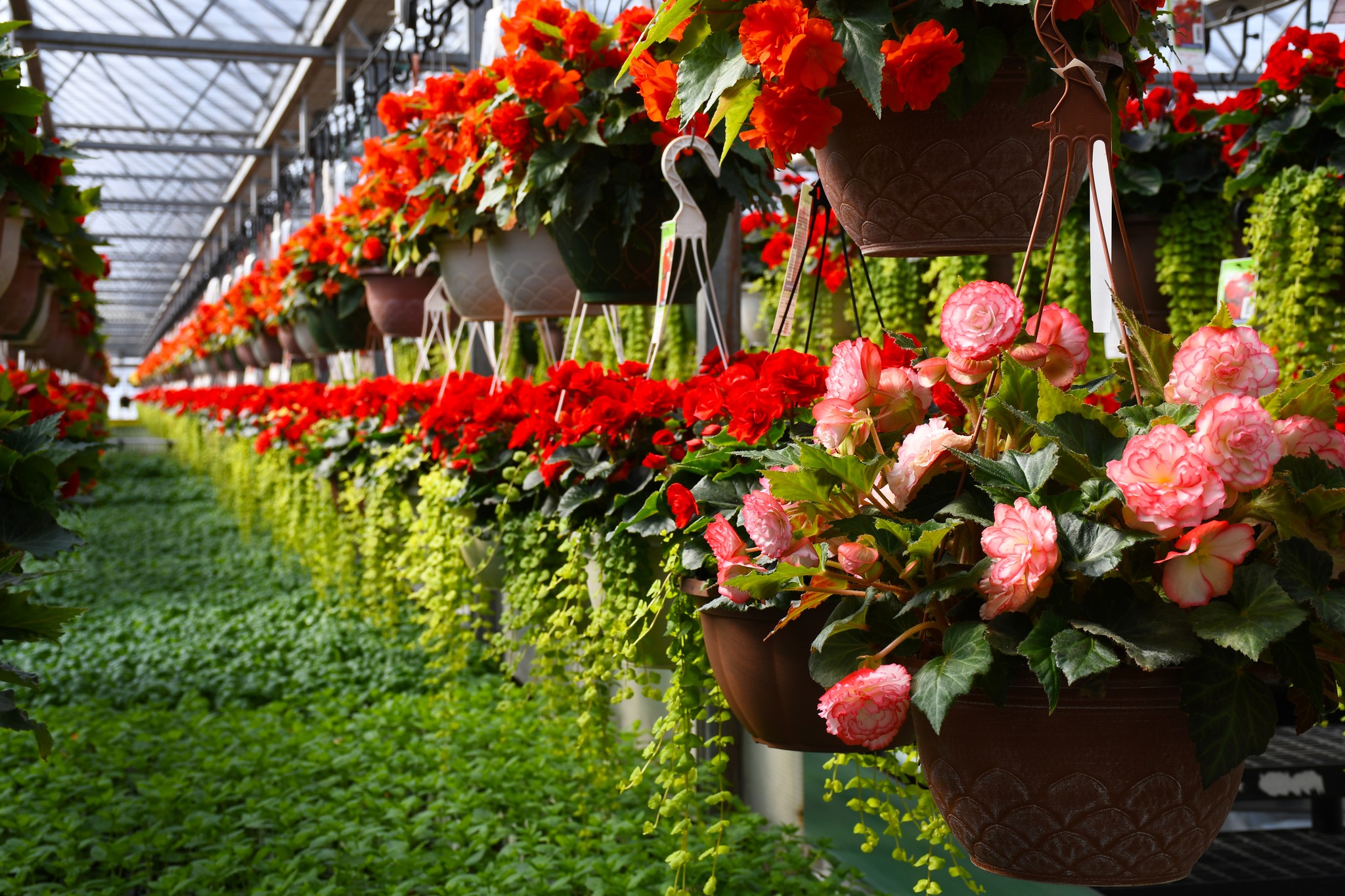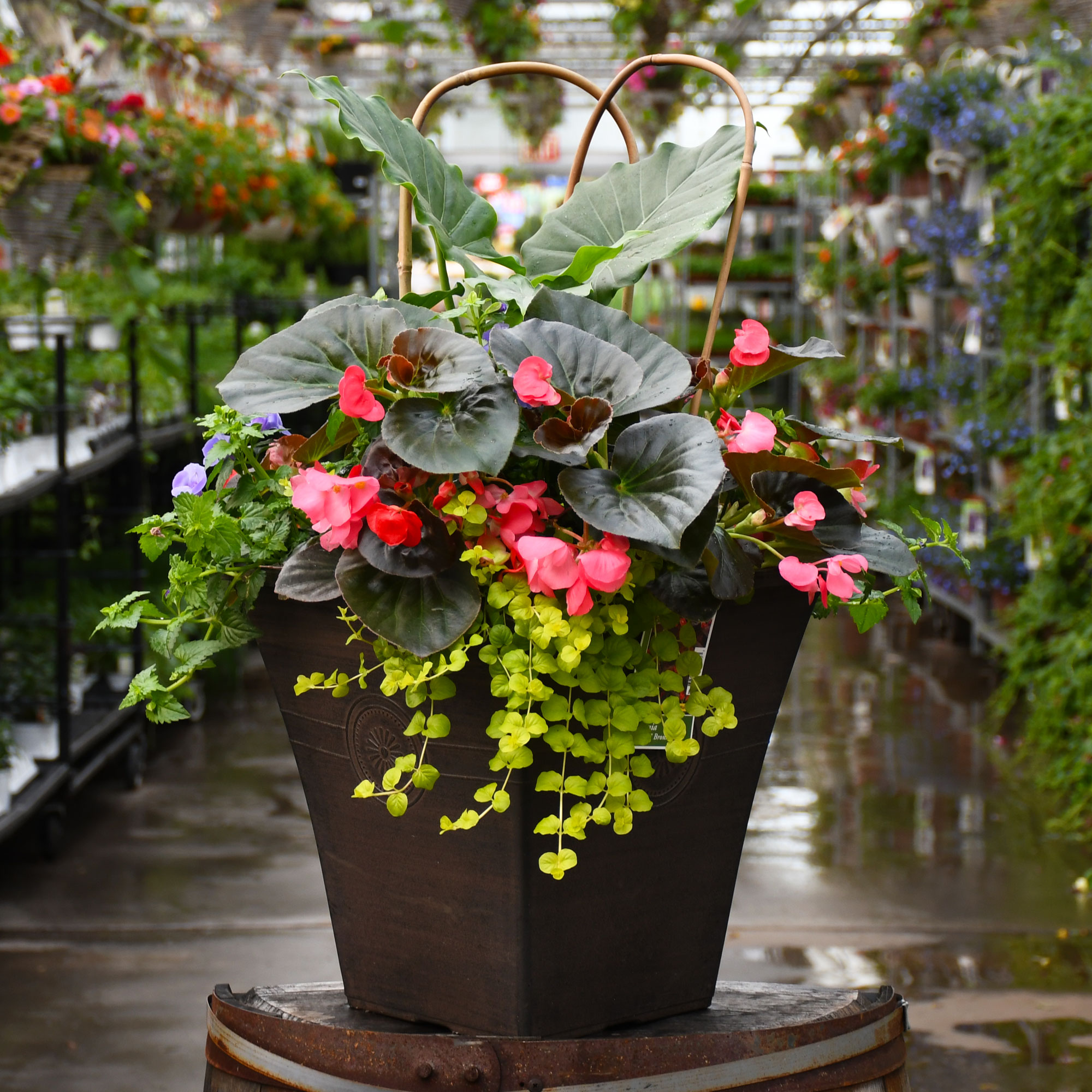Asparagus Plumosus



Out of stock
Ready to purchase!- Sun Preference
- Part-Sun, No-Sun
Description
Asparagus Fern | Asparagus plumosus
Other Names: Lace Fern, Climbing Asparagus, A. setaceus
Feathery and soft, this variety creates great visual interest when massed; used widely in floral arrangements; small greenish-white flowers in summer followed by green berries that mature to black; a very fine garden or container plant.Direct from the Grower
When you see the Gerten Grown logo on our annuals, you know you're getting a fresh plant directly from our greenhouse. We've been perfecting our growing process for over four generations and pride ourselves on providing local quality and freshness to our customers. Better pricing on better quality plant material, that's Gerten Grown.
Details
Asparagus Fern's attractive tiny ferny leaves remain light green in color throughout the season on a plant with a spreading habit of growth. It produces green berries from mid summer to mid fall, which fade to black over time.
Asparagus Fern is a dense herbaceous annual with a ground-hugging habit of growth. It brings an extremely fine and delicate texture to the garden composition and should be used to full effect.
This is a relatively low maintenance plant, and is best cleaned up in early spring before it resumes active growth for the season. Gardeners should be aware of the following characteristic(s) that may warrant special consideration;
- Invasive
- Insects
Asparagus Fern is recommended for the following landscape applications;
- Accent
- Mass Planting
- General Garden Use
- Container Planting
Asparagus Fern will grow to be about 5 feet tall at maturity, with a spread of 24 inches. As a climbing vine, it should either be planted near a fence, trellis or other landscape structure where it can be trained to grow upwards on it, or allowed to trail off a retaining wall or slope. Although it's not a true annual, this fast-growing plant can be expected to behave as an annual in our climate if left outdoors over the winter, usually needing replacement the following year. As such, gardeners should take into consideration that it will perform differently than it would in its native habitat.
This plant does best in partial shade to shade. It does best in average to evenly moist conditions, but will not tolerate standing water. It is particular about its soil conditions, with a strong preference for rich, acidic soils. It is somewhat tolerant of urban pollution. This species is not originally from North America.
Asparagus Fern is a fine choice for the garden, but it is also a good selection for planting in outdoor pots and containers. Because of its spreading habit of growth, it is ideally suited for use as a 'spiller' in the 'spiller-thriller-filler' container combination; plant it near the edges where it can spill gracefully over the pot. It is even sizeable enough that it can be grown alone in a suitable container. Note that when growing plants in outdoor containers and baskets, they may require more frequent waterings than they would in the yard or garden.
More Information
| Common Family Name | Fern |
|---|---|
| Sun Preference | Part-Sun, No-Sun |
| Plant Life Cycle | Annual |
| Mature Height (Range) | 49" - 60" |
| Mature Spread (Range) | 12" - 24" |


